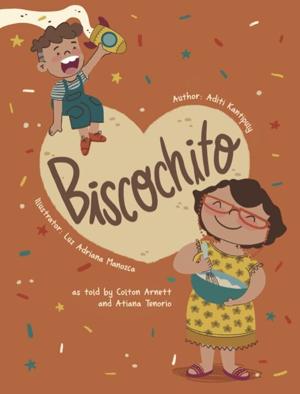Aditi Kantipuly has combined her medical knowledge with creative storytelling in her new children’s book, Biscochito. The publication aims to educate young readers about cerebral cavernous malformation (CCM), a rare genetic condition affecting blood vessels in the brain and spinal cord. CCM is known to cause chronic headaches, seizures, and stroke-like symptoms, and is notably more prevalent in New Mexico than in other regions of the United States.
While training as a physician in preventive medicine at a Canadian university, Kantipuly recognized the power of various storytelling mediums to convey scientific concepts. She stated, “I like to use different mediums of storytelling — through art, music — to explain science.” This approach inspired her to address the complexities of CCM through a format accessible to families and children.
Bridging Science and Culture
The book was developed in collaboration with a group of CCM patients in New Mexico. Biscochito follows a grandmother with the condition who shares her experiences with her grandson while baking biscochitos, the official state cookie of New Mexico. Each cookie serves as a metaphorical vehicle for sharing insights about CCM. Kantipuly emphasized the importance of making information about the disorder approachable, stating, “That format can work well when you’re trying to pair it with something really complex.”
Kantipuly’s project gained momentum through funding from the Rare Disease Diversity Coalition, which aims to address challenges faced by underserved populations with rare diseases. The coalition connected her with the Alliance to Cure Cavernous Malformation, leading her to research the history of CCM in New Mexico. The cultural significance of biscochitos facilitated a deeper connection to the state, enriching the narrative.
Community Engagement and Educational Impact
Kantipuly ensured that individuals affected by CCM were actively involved in the book’s creation, providing feedback on the story and characters. “The way that the narrative evolved was through conversations with the support group,” she explained. This iterative process was vital in shaping a story that resonates with both children and families affected by the condition.
The New Mexico Public Education Department recognized the book’s educational potential and has distributed copies to 50 elementary schools across the state. According to Anne Marlow-Geter, manager of the agency’s Safe and Healthy Schools Bureau, the book serves as a valuable resource for teachers and students alike.
For families like that of Sakura Tafoya, an 8-year-old CCM patient from Santa Fe, the book has been a meaningful tool. “We have two copies of Biscochito — one for home and one for the school library,” her father, Jared Tafoya, noted. Sakura read the story to her class last year, fostering awareness and discussion about the condition among her peers.
Jared Tafoya reflected on the thematic legacy of the book, saying, “CCM is like a legacy — like a good recipe for biscochitos.” Through her innovative approach, Kantipuly not only sheds light on a rare genetic disorder but also creates a lasting impact on the community, bridging the gap between science and cultural heritage.






